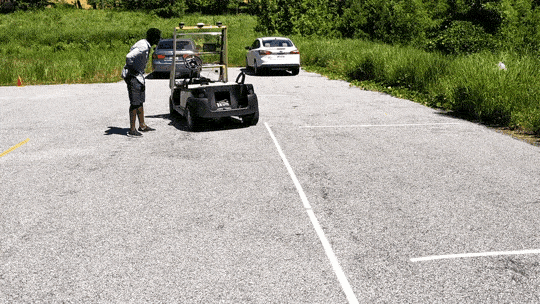By James Forbes, Customer Interaction and Experience Development Manager, Ford Motor Company

Working on self-driving vehicles is exciting for many reasons. Rarely do you get an opportunity to help change the way we move. While the Ford team is excited about the chance we have to shape the future of mobility, we also feel a responsibility to help foster this excitement with the next generation of engineers.
Working with students doesn’t just help prepare them for a successful career in the automotive industry — it also keeps Ford at the forefront of cutting-edge research and creative thinking. We regularly collaborate with universities across the country to foster the growth of students and advance research in a variety of areas, from self-driving algorithm development to the study of new manufacturing materials.
For the past few years, Ford has been working with students in Clemson University’s Deep Orange automotive program. Now in its 12th year, Deep Orange is a two-year Masters program that teaches by doing — it assembles students into teams and challenges them to design and build a fully functioning concept car. Working collaboratively with each other, faculty and industry veterans like those of us at Ford, students get a first-hand look at how a car goes from concept to reality.

Sponsored by Ford, Deep Orange 10 tasked students with designing a functioning self-driving vehicle prototype — one that turned out to be the first ever built at Clemson. It wasn’t enough to simply develop a car that could drive itself (though as anyone in the field could tell you, that’s not very simple at all!) Students also had to design and create an innovative user experience, which led them to consider how ride comfort, voice and gesture control and other elements could improve trips for potential customers.
Throughout the course, my Ford colleagues and I met with students on a regular basis to conduct design reviews and hold brainstorming sessions to generate new ideas. Students got an understanding of the entire vehicle design cycle, plus critical experience in how to think through problems when what you’re building with your hands doesn’t quite match up to what you envisioned in a virtual design environment. Here are a few highlights ahead of the vehicle’s upcoming reveal.
Playing with Space: The Clemson team had a lot of room to get creative with their interior design concepts, and they certainly didn’t disappoint. Envisioned as a personal-use vehicle, the interior was designed to feel like a living room on wheels, with seats facing each other and sliding, swing-out doors that open when entering and exiting. An interior projection screen would also display information like navigation or music choices.

Real Autonomy: Students may have honed in on the customer experience for their concept, but they still had to develop and build a vehicle that could drive itself, which is no easy task. Using a golf cart as one of their prototypes, the team tested the capabilities of their parking software — even getting the vehicle to detect and maneuver properly in parallel parking situations.

Later vehicle builds also tested various self-driving technologies the students developed.

Pointing in the Right Direction: To make parking decisions even easier, the Clemson team came up with the novel idea of letting riders give voice- and gesture-based commands. A passenger could point and say to park on the left side of the vehicle, for example, and the car would go ahead and find a place to park on that side. It’s not only a clever idea, but in the COVID-19 era would also reduce the need for more touch-based interfaces.
Monitoring for Comfort: A key element of the interior experience involves passenger comfort, and the students wanted to include ways for the self-driving vehicle to adjust its behavior if people inside were getting motion sickness. The team proposed monitoring how people were feeling using smart shirts and motion sickness assessments, and incorporated the ability for the vehicle to adjust its speed if riders felt uncomfortable.
It was inspiring to see how Deep Orange gives students a comprehensive view of what it takes to conceive of, design and build a real self-driving vehicle. Congratulations to all the students who made Deep Orange 10 successful! While we look forward to helping the Clemson team reveal the final prototype soon, we are even more excited about the huge impact these graduates are bound to have on the future.
"how" - Google News
October 23, 2020 at 02:35AM
https://ift.tt/3ogFwmY
How Ford Helped Clemson Students Build the University's First Self-Driving Car - Medium
"how" - Google News
https://ift.tt/2MfXd3I
Bagikan Berita Ini














0 Response to "How Ford Helped Clemson Students Build the University's First Self-Driving Car - Medium"
Post a Comment